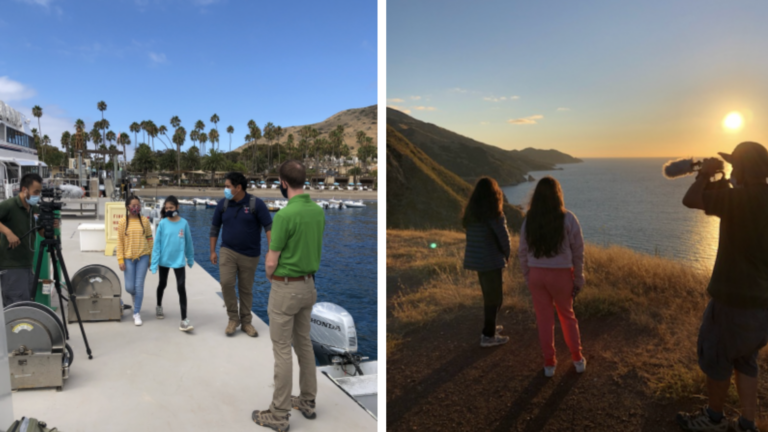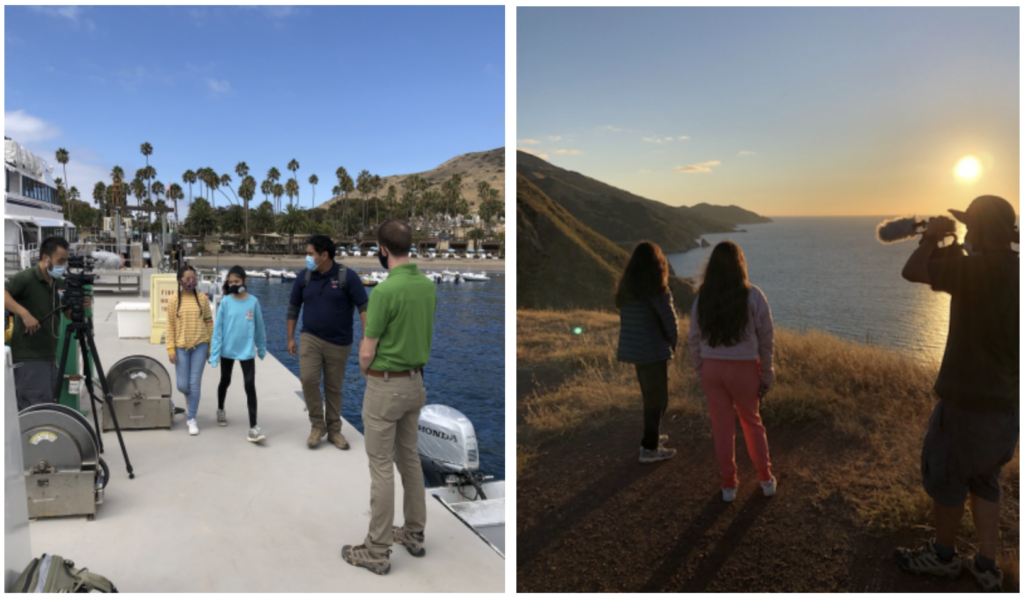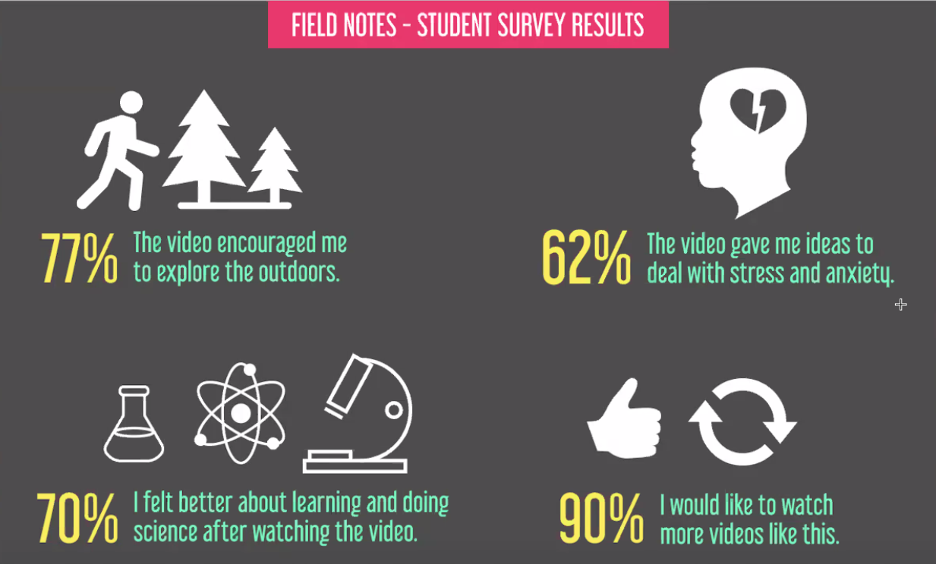
Virtual Classroom Visits to Catalina Island
Coastal businesses, especially vessel-based and coastal outdoor education programs for the public and youth, have been hit hard by COVID-19 closures and restrictions. Over the past several months, USC Sea Grant has brought together multiple organizations to leverage expertise and resources in order to help one another not only survive but adapt during these closures and ongoing prescribed physical distancing. Together, the Coastal Education Collaborative was created and includes USC Sea Grant, Emerald Bay Outdoor Academy, Los Angeles Unified School District (LAUSD) Office of Outdoor Education (OOEE), Los Angeles Maritime Institute, Mountains and Sea Education, Island Packers, and Long Beach Marine Institute. Many of the partners have joined efforts in providing in-classroom support for science, engineering, math and technology instruction, and afterschool enrichment programs. One such partnership within this Collaborative that has been successful in continuing at-home education created the virtual video product titled Wild Los Angeles: Catalina Island, supported by the 2020 COVID-19 Related Rapid Response Funding.

Beginning in late spring, two of the partners, Emerald Bay Outdoor Academy and LAUSD OOEE, with support from USC Sea Grant, developed a virtual visit to Catalina Island and Emerald Bay for students. This video captures many of the wonders of the natural environment, the rich experiences for students at Emerald Bay, raises awareness about Marine Protected Areas and helps teachers in addressing student wellness. Burton Miller, Program Director of Emerald Bay Outdoor Academy shared, “The invaluable support of Sea Grant helped us connect with LAUSD and create a virtual resource that will support students during COVID-19 and beyond. The video resource not only highlights the beauty of Catalina Island but encourages students to think critically about conservation as well as their own emotional well-being.”
Over 1,000 classrooms in LAUSD have viewed the video and provided recommendations to the team, which were then incorporated into the video. Further, participating classrooms that provided feedback were thanked for their comments and opinions in the video’s end credits. A finalized version of the video can be found at outdooreducation.org.
Feedback from teachers during this pilot trial has revealed that:
- 96% of the teachers reported they would use this video to create enthusiasm for the outdoors
- 92% of the teachers would use this video for instruction
- 79% of the teachers would use the video to facilitate discussions about self-care
- 96% of the teachers would use this video for social-emotional learning

Throughout the distribution and sharing of this video, it has been so positively received that OOEE will be developing further episodes, each connecting both the natural world and wellness. Gerald Salazar, Director of LAUSD OOEE, expresses that “As a parent of school-aged children, I know how tough it’s been for kids in their transition to distance learning and isolation from their peers. This collaboration provided the opportunity to keep us connected to our students. To inform and inspire this generation to engage the outdoors as a resource for physical and mental well-being. I am especially proud of how the video empowers children by giving them examples of self-care and how it validates the stress and anxiety being silently felt by many.”
This partnership is just one example of how programs can work innovatively together to create positive learning experiences for children, no matter the circumstance. With any new project, there are still challenges to overcome, such as internet connectivity, and as this partnership progresses, partners continue to strive to reach broader audiences. As stay at home learning continues this fall, this partnership of vessel-based and outdoor education programs continues to develop additional products and strategies to increase resilience along the coast and within the environmental education community.